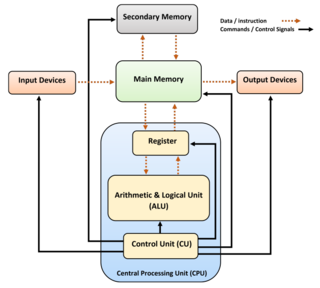Bibliography
- IITRAN / 360: Self-Instructional Manual and Text, Bauer, Charles R. et al., Addison Wesley Publishing, 1967.
- The IITRAN Programming Language, R. Dewar et al., CACM 12(10):569-575 (Oct 1969).
IITRAN is a discontinued programming language created in the mid-1960s and designed as a first language for students. The primary designer of the language, William S. Worley, also contributed to the design of PL/I, and the two languages have similar syntax. The name derives from Illinois Institute of Technology, where it was developed.
The IITRAN language was initially implemented for IBM 7040, with a compiler made available to students in 1964. This was followed shortly by an IBM System/360 implementation in 1966, for which the language was partially redesigned by a committee led by Dr. Peter G. Lykos. In the early 1970s, a compiler was developed for the Univac 1108 platform. Programming was done using punched cards.
IITRAN was designed and developed in response to the increasing demand for a computer language which would meet the following specifications:
(Bauer, p. V)
There was a Spanish language version of IITRAN at IIT as well. It utilized Spanish keywords rather than English ones. For example, the keyword read was replaced by leer.

APL is a programming language developed in the 1960s by Kenneth E. Iverson. Its central datatype is the multidimensional array. It uses a large range of special graphic symbols to represent most functions and operators, leading to very concise code. It has been an important influence on the development of concept modeling, spreadsheets, functional programming, and computer math packages. It has also inspired several other programming languages.
In computing, a compiler is a computer program that translates computer code written in one programming language into another language. The name "compiler" is primarily used for programs that translate source code from a high-level programming language to a low-level programming language to create an executable program.

A computer program is a sequence or set of instructions in a programming language for a computer to execute. It is one component of software, which also includes documentation and other intangible components.

Fortran is a third generation, compiled, imperative programming language that is especially suited to numeric computation and scientific computing.
PL/I is a procedural, imperative computer programming language initially developed by IBM. It is designed for scientific, engineering, business and system programming. It has been in continuous use by academic, commercial and industrial organizations since it was introduced in the 1960s.
BBC BASIC is an interpreted version of the BASIC programming language. It was developed by Acorn Computers Ltd when they were selected by the BBC to supply the computer for their BBC Literacy Project in 1981.
In computer science, a compiler-compiler or compiler generator is a programming tool that creates a parser, interpreter, or compiler from some form of formal description of a programming language and machine.

Kenneth Eugene Iverson was a Canadian computer scientist noted for the development of the programming language APL. He was honored with the Turing Award in 1979 "for his pioneering effort in programming languages and mathematical notation resulting in what the computing field now knows as APL; for his contributions to the implementation of interactive systems, to educational uses of APL, and to programming language theory and practice".

HAL/S is a real-time aerospace programming language compiler and cross-compiler for avionics applications used by NASA and associated agencies. It has been used in many U.S. space projects since 1973 and its most significant use was in the Space Shuttle program. It was designed by Intermetrics in 1972 for NASA and delivered in 1973. HAL/S is written in XPL, a dialect of PL/I. Although HAL/S is designed primarily for programming on-board computers, it is general enough to meet nearly all the needs in the production, verification, and support of aerospace and other real-time applications. According to documentation from 2005, it was being maintained by the HAL/S project of United Space Alliance.
ALGOL 60 is a member of the ALGOL family of computer programming languages. It followed on from ALGOL 58 which had introduced code blocks and the begin and end pairs for delimiting them, representing a key advance in the rise of structured programming. ALGOL 60 was one of the first languages implementing function definitions. ALGOL 60 function definitions could be nested within one another, with lexical scope. It gave rise to many other languages, including CPL, PL/I, Simula, BCPL, B, Pascal, and C. Practically every computer of the era had a systems programming language based on ALGOL 60 concepts.
XPL, for expert's programming language is a programming language based on PL/I, a portable one-pass compiler written in its own language, and a parser generator tool for easily implementing similar compilers for other languages. XPL was designed in 1967 as a way to teach compiler design principles and as starting point for students to build compilers for their own languages.
ALGOL 58, originally named IAL, is one of the family of ALGOL computer programming languages. It was an early compromise design soon superseded by ALGOL 60. According to John Backus:
The Zurich ACM-GAMM Conference had two principal motives in proposing the IAL: (a) To provide a means of communicating numerical methods and other procedures between people, and (b) To provide a means of realizing a stated process on a variety of machines...
WATFIV, or WATerloo FORTRAN IV, developed at the University of Waterloo, Canada is an implementation of the Fortran computer programming language. It is the successor of WATFOR.
Digitek was an early system software company located in Los Angeles, California, United States.

Programming language theory (PLT) is a branch of computer science that deals with the design, implementation, analysis, characterization, and classification of formal languages known as programming languages. Programming language theory is closely related to other fields including mathematics, software engineering, and linguistics. There are a number of academic conferences and journals in the area.

The IBM Time Sharing System TSS/360 is a discontinued early time-sharing operating system designed exclusively for a special model of the System/360 line of mainframes, the Model 67. Made available on a trial basis to a limited set of customers in 1967, it was never officially released as a supported product by IBM. TSS pioneered a number of novel features, some of which later appeared in more popular systems such as MVS. TSS was migrated to System/370 and 303x systems, but despite its many advances and novel capabilities, TSS failed to meet expectations and was eventually canceled. The Resident Supervisor of TSS/370 was used as the basis for a port of UNIX to the IBM mainframe. TSS/360 also inspired the development of the TSS/8 operating system.

Anthony James Barr, aka Tony Barr or Jim Barr, is an American programming language designer, software engineer and inventor. Among his notable contributions are the Statistical Analysis System (SAS), automated lumber yield optimization, and the Automated Classification of Medical Entities (ACME).

In computing, a compiler is a computer program that transforms source code written in a programming language or computer language, into another computer language. The most common reason for transforming source code is to create an executable program.

In computer science and computer engineering, computer architecture is a description of the structure of a computer system made from component parts. It can sometimes be a high-level description that ignores details of the implementation. At a more detailed level, the description may include the instruction set architecture design, microarchitecture design, logic design, and implementation.
In computer programming, a function, procedure, method, subroutine, routine, or subprogram is a callable unit of software logic that has a well-defined interface and behavior and can be invoked multiple times.